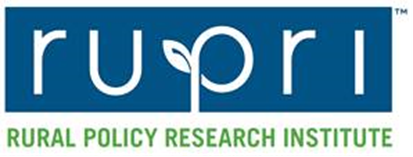- Telehealth Study Recruiting Veterans Now
- USDA Delivers Immediate Relief to Farmers, Ranchers and Rural Communities Impacted by Recent Disasters
- Submit Nominations for Partnership for Quality Measurement (PQM) Committees
- Unleashing Prosperity Through Deregulation of the Medicare Program (Executive Order 14192) - Request for Information
- Dr. Mehmet Oz Shares Vision for CMS
- CMS Refocuses on its Core Mission and Preserving the State-Federal Medicaid Partnership
- Social Factors Help Explain Worse Cardiovascular Health among Adults in Rural Vs. Urban Communities
- Reducing Barriers to Participation in Population-Based Total Cost of Care (PB-TCOC) Models and Supporting Primary and Specialty Care Transformation: Request for Input
- Secretary Kennedy Renews Public Health Emergency Declaration to Address National Opioid Crisis
- Secretary Kennedy Renews Public Health Emergency Declaration to Address National Opioid Crisis
- 2025 Marketplace Integrity and Affordability Proposed Rule
- Rural America Faces Growing Shortage of Eye Surgeons
- NRHA Continues Partnership to Advance Rural Oral Health
- Comments Requested on Mobile Crisis Team Services: An Implementation Toolkit Draft
- Q&A: What Are the Challenges and Opportunities of Small-Town Philanthropy?
Meatpacking and Prisons Drive the Rural Covid-19 Infection Rate

By Tim Marema
A rural county’s economic type seems to have a strong impact on how quickly the coronavirus is spreading. Hotspot counties with meatpacking plants or prisons have infection rates much higher than the national average.
Farmers Markets in Pennsylvania
Ths pandemic has spotlighted the need for fresh fruits and vegetables. Pennsylvania’s hardworking farmers, farm workers, farmers market operators, and others in the agricultural industry have shown their commitment to ensuring residents across the commonwealth have access to these products.
Here is a list of all the operating farmers markets across Pennsylvania.
Pennsylvania Governor Announces Reopening of 24 Counties Beginning May 8
Balancing economic benefits and public health risks, Governor Tom Wolf today announced the reopening of 24 counties in the northwest and north-central regions of the state, moving them from red to yellow beginning at 12:01 a.m., Friday, May 8.
Counties Moving to Yellow Reopening:
The 24 counties that will move from red to yellow on May 8 are: Bradford, Cameron, Centre, Clarion, Clearfield, Clinton, Crawford, Elk, Erie, Forest, Jefferson, Lawrence, Lycoming, McKean, Mercer, Montour, Northumberland, Potter, Snyder, Sullivan, Tioga, Union, Venango, and Warren.
These counties were deemed ready to move to a reopening – or yellow phase – because of low per-capita case counts, the ability to conduct contact tracing and testing, and appropriate population density to contain community spread.
All reopening decisions follow the six standards outlined in the governor’s plan to reopen Pennsylvania. These include adhering to:
- Data-driven and quantifiable criteria to drive a targeted, evidence-based, regional approach to reopening.
- Clear guidance and recommendations for employers, individuals, and health care facilities and providers for assured accountability.
- Adequate and available personal protective equipment and diagnostic testing.
- A monitoring and surveillance program that allows the commonwealth to deploy swift actions for containment or mitigation.
- Protections for vulnerable populations such as limitations on visitors to congregate care facilities and prisons.
- Limitations on large gatherings unrelated to occupations.
Please find the full plan here.
Resources for Helping Consumers Who are Experiencing Life Changes
The HHS Health Insurance Marketplace provides a list of resources for Federally-facilitated Marketplace assisters to help consumers are experiencing life changes, like loss of job-based coverage and shifts in income.
For information on reporting changes to the Marketplace, see these resources:
- Marketplace coverage & Coronavirus
- Which changes to report to the Marketplace
- How to report changes to the Marketplace
- Changes in Circumstances – January 2018 (slides)
For information on Special Enrollment Periods, see these resources:
- Enroll in or change 2020 plans — only with a Special Enrollment Period
- Special Enrollment Period (SEP) Overview for the Federally-facilitated Marketplace – April 12, 2019 (slides)
- Complex Cases: Navigating Eligibility for SEPs and Resolving SVIs and DMIs – February 2020 (slides)
For information about transitioning from job based coverage to other forms of coverage (including Medicaid and COBRA), see these resources:
- Tip Sheet on Health Coverage Option for Employers Helping their Employees During the COVID-19 National Emergency
- Marketplace Information for Businesses Impacted by COVID-19
- Health coverage options if you’re unemployed
- Losing Job-based Coverage
- Medicaid & CHIP coverage
- COBRA coverage and the Marketplace
- COBRA Continuation Coverage Questions and Answers
- Complex Case Scenarios – Preventing Gaps in Health Care Coverage Mini-Series: Transitioning from Employer-Sponsored Coverage to Other Health Coverage – June 5, 2015 (slides)
For guidance related to Coronavirus Disease 2019 (COVID-19), qualified health plans (QHPs) and other private market coverage, see: Coronavirus Disease 2019 (COVID-19) Guidance.
Need additional help? Refer to the Assister Technical Assistance Resource Page for more information about Marketplace eligibility and enrollment. If you need additional assistance, Navigators can reach out to their Project Officers with questions and CACs can contact the CAC inbox at CACquestions@cms.hhs.gov
HHS Begins Distribution of Payments to Hospitals with High COVID-19 Admissions, Rural Providers
On May 1, 2020, the Department of Health and Human Services (HHS) began processing payments from the Provider Relief Fund to hospitals with large numbers of COVID-19 inpatient admissions through April 10, 2020, and to rural providers in support of the national response to COVID-19.
“These new payments are being distributed to healthcare providers who have been hardest hit by the virus: $12 billion to facilities admitting large numbers of COVID-19 patients and $10 billion to providers in rural areas, who are already working on narrow margins,” said HHS Secretary Alex Azar. “HHS has put these funds out as quickly as possible, after gathering data to ensure that they are going to the providers who need them the most. With another $75 billion recently appropriated by Congress, the Trump Administration will continue doing everything we can to support America’s heroic healthcare providers on the frontlines of this war on the virus.”
COVID-19 High-Impact Distribution:
Recognizing the particular impact the COVID-19 pandemic has had on hospitals in certain parts of the nation, and that inpatient admissions are a primary driver of costs to hospitals related to COVID-19, HHS is distributing $12 billion to 395 hospitals who provided inpatient care for 100 or more COVID-19 patients through April 10, 2020, $2 billion of which will be distributed to these hospitals based on their Medicare and Medicaid disproportionate share and uncompensated care payments.
These 395 hospitals accounted for 71 percent of COVID-19 inpatient admissions reported to HHS from nearly 6,000 hospitals around the country. The distribution uses a simple formula to determine what each hospital receives: hospitals are paid a fixed amount per COVID-19 inpatient admission, with an additional amount taking into account their Medicare and Medicaid disproportionate share and uncompensated care payments.
These hospitals will begin receiving funds via direct deposit in the coming days.
View the state and county breakdown – PDF.
Rural Distribution:
Rural hospitals, many of whom were operating on thin margins prior to COVID-19, have also been particularly devastated by this pandemic. As healthy patients delay care and cancel elective services, rural hospitals are struggling to keep their doors open.
Recipients of the $10 billion rural distribution will include, rural acute care general hospitals and Critical Access Hospitals (CAHs), Rural Health Clinics (RHCs), and Community Health Centers located in rural areas.
Hospitals and RHCs will each receive a minimum base payment plus a percent of their annual expenses. This expense-based method accounts for operating cost and lost revenue incurred by rural hospitals for both inpatient and outpatient services. The base payment will account for RHCs with no reported Medicare claims, such as pediatric RHCs, and CHCs lacking expense data, by ensuring that all clinical, non-hospital sites receive a minimum level of support no less than $100,000, with additional payment based on operating expenses. Rural acute care general hospitals and CAHs will receive a minimum level of support of no less than $1,000,000, with additional payment based on operating expenses.
Eligible providers will begin receiving funds in the coming days via direct deposit, based on the physical address of the facilities as reported to the Centers for Medicare and Medicaid Services (CMS) and the Health Resources and Services Administration (HRSA), regardless of their affiliation with organizations based in urban areas.
View the state-by-state breakdown – PDF.
HHS and the Administration are continuing to work rapidly on additional targeted distributions to some providers including skilled nursing facilities, dentists, and providers that solely take Medicaid.
Visit hhs.gov/providerrelief for additional information.
Update to COVID-19 Data Primer from Mathematica
In response to the evolving COVID-19 pandemic, particularly in the area of data analytics, Mathematica created a COVID-19 Data Primer. The primer is designed to help researchers, data scientists, and others who analyze health care claims or administrative data quickly join the effort to better understand, track, and contain COVID-19. Today, Mathematica launched an update adding information on linking claims to public data sources and information on how diagnosis and procedure codes are being used in claims.
Policy Brief: Metropolitan/Nonmetropolitan COVID-19 Confirmed Cases and General and ICU Beds

Fred Ullrich, BA; and Keith Mueller, PhD
The spread of COVID-19 across rural areas has fueled concern about the availability of healthcare resources for dealing with the pandemic. This brief looks at a single measure of healthcare resources – hospital beds – and reports of current COVID-19 cases in a single week to assess the impact on rural facilities.
Please click here to read the brief.
HHS Launches COVID-19 Uninsured Program Portal
On April 27, the U.S. Department of Health and Human Services (HHS), through the Health Resources and Services Administration (HRSA), launched a new COVID-19 Uninsured Program Portal, allowing health care providers who have conducted COVID-19 testing or provided treatment for uninsured COVID-19 individuals on or after February 4, 2020 to submit claims for reimbursement. Providers can access the portal at COVIDUninsuredClaim.HRSA.gov.
The Trump Administration is committed to ensuring that individuals are protected against financial obstacles that might prevent them from getting the testing and treatment they need for COVID-19. As part of the Families First Coronavirus Response Act and the Coronavirus Aid, Relief, and Economic Security (CARES) Act, health care providers can request claims reimbursement electronically through the COVID-19 Uninsured Program Portal and receive reimbursement, generally at Medicare rates for testing uninsured individuals for COVID-19 and treating uninsured individuals with a COVID-19 diagnosis.
Reopening Could Cause 233,000 Extra Deaths by June 30 but Save Up to 18M Jobs: Report
As states consider relaxing coronavirus lockdown orders, a new report estimates that fully reopening the economy would lead to an additional 233,000 deaths nationally by the end of June, relative to not reopening, but would at the same time save approximately 18.6 million jobs from being lost.
The University of Pennsylvania’s Penn Wharton Budget Model analyzed the health and economic effects of states partially reopening (lifting emergency declarations, stay-at-home orders, and school closures) as well as fully reopening, which would include businesses and restaurants as well.
The model, released on Friday, projects on a national level that if states do not open before June 30 and maintain status quo, the cumulative national deaths due to the virus would rise to about 117,000 by June 30 (including deaths before May 1), and approximately 18.6 million jobs would be lost between May 1 and June 30.
Personal Protective Equipment Burn Rate Mobile App
The Personal Protective Equipment (PPE) Burn Rate Calculator is now available as a mobile app. Facilities can use the App to calculate their average PPE consumption rate or “burn rate.” The app estimates how many days a PPE supply will last given current inventory levels and PPE burn rate. The app is available for both iOS and Android devices.
